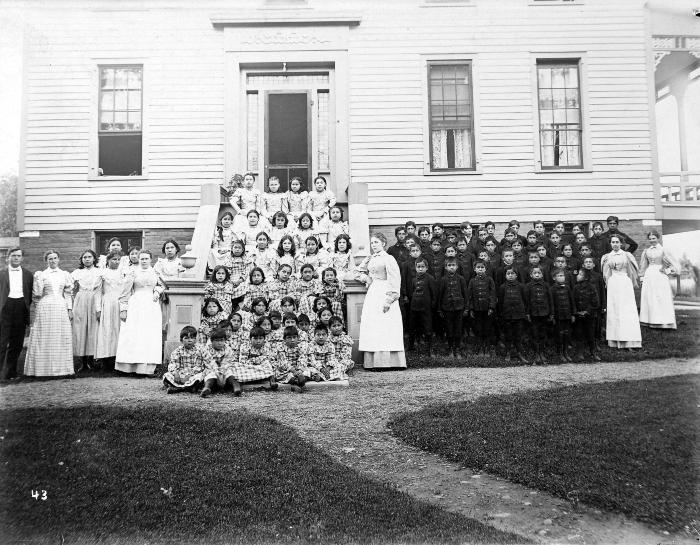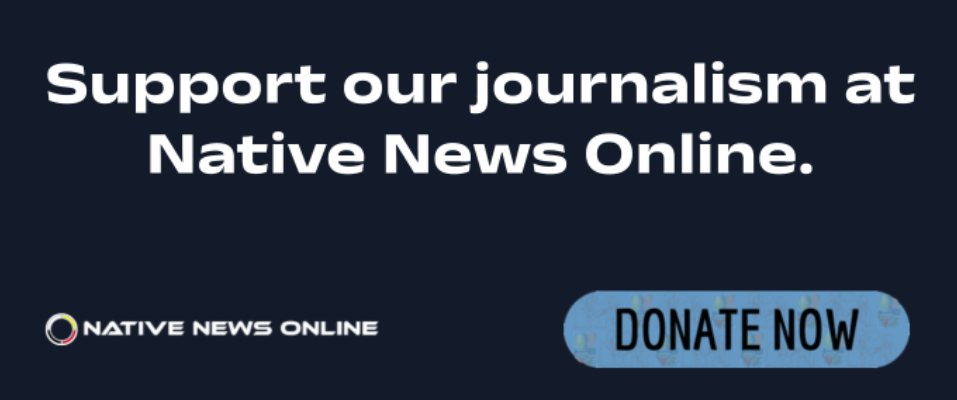
- Details
- By Native News Online Staff
New York Gov. Kathy Hochul is scheduled to visit the Seneca Nation’s Cattaraugus Territory on Tuesday to issue a formal apology for New York State’s role in the operation of the Thomas Indian School and to meet with survivors of the institution, according to an official announcement made last Friday.
Tuesday's trip to the Seneca territory will be the first time a governor of New York has ever visited the Seneca Nation. Her visit is the result of Seneca Nation President J. Conrad Seneca who in March asked her if she would issue an apology similar to President Joe Biden's national apology he made last fall acknowledging the federal government's role in the boarding school system, the trauma and cultural loss experienced by Native American communities.
“I asked her, I said, ‘Would you consider coming to our territory and apologizing — as President Biden did — on behalf of the state of New York for what happened during that era of the boarding school that existed on Seneca territory?’” Seneca said. “And without hesitation, she said yes.”
The Thomas Indian School was part of a broader system of boarding schools aimed at eradicating Native American cultures and languages. From 1855 until the late 1950s, the facility operated on Seneca territory, much of that time under the direct control of New York State. Aligned with federal assimilation policies, the Thomas Indian School forcibly removed Native children from their families and systematically worked to erase Native cultures through a regime marked by widespread manual labor, as well as physical and psychological abuse.
Children were forcibly removed from their families, prohibited from speaking their native languages, and subjected to various forms of physical and emotional abuse. This policy of forced assimilation has been described by historians as a form of cultural genocide .
Governor Hochul's apology is part of a broader effort to address historical injustices faced by Indigenous communities.
While the apology is a significant step, many survivors and community members stress the importance of concrete actions to support healing and reconciliation. Calls have been made for the establishment of truth and healing commissions, support for language revitalization programs, and the return of remains of children who died while at these institutions.
The Seneca Nation has expressed hope that Governor Hochul's apology will lead to meaningful actions that address the lasting impacts of the Thomas Indian School and other similar institutions. As discussions continue, the focus remains on ensuring that such historical injustices are acknowledged and that steps are taken to support the healing and empowerment of Indigenous communities
More Stories Like This
Native News Weekly (August 25, 2024): D.C. BriefsUS Presidents in Their Own Words Concerning American Indians
Navajo Man Faces Vehicular Homicide Charge After Child Killed at Navajo Nation Christmas Parade
Suspected Drunk Driver Crashes into Parade in Kayenta on Navajo Nation, Killing 1 & Injuring 3 Others
Tribal Broadband to Get $6.5M Boost as NTIA Plans Consultations
Help us defend tribal sovereignty.
At Native News Online, our mission is rooted in telling the stories that strengthen sovereignty and uplift Indigenous voices — not just at year’s end, but every single day.
Because of your generosity last year, we were able to keep our reporters on the ground in tribal communities, at national gatherings and in the halls of Congress — covering the issues that matter most to Indian Country: sovereignty, culture, education, health and economic opportunity.
That support sustained us through a tough year in 2025. Now, as we look to the year ahead, we need your help right now to ensure warrior journalism remains strong — reporting that defends tribal sovereignty, amplifies Native truth, and holds power accountable.
 The stakes couldn't be higher. Your support keeps Native voices heard, Native stories told and Native sovereignty defended.
The stakes couldn't be higher. Your support keeps Native voices heard, Native stories told and Native sovereignty defended.
Stand with Warrior Journalism today.
Levi Rickert (Potawatomi), Editor & Publisher


